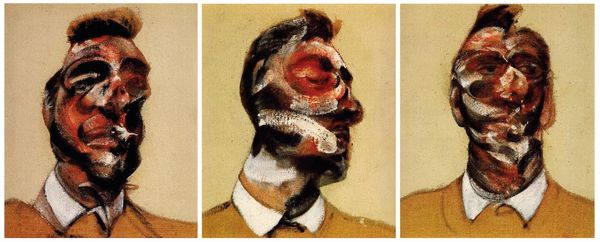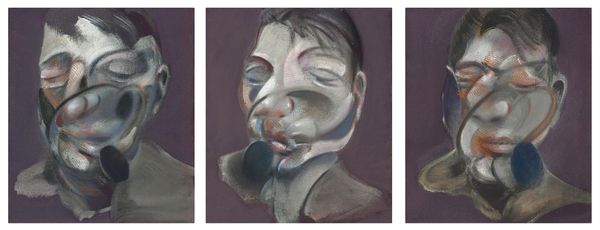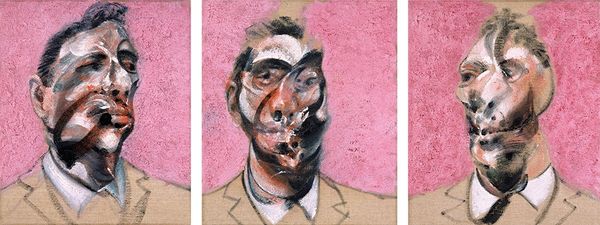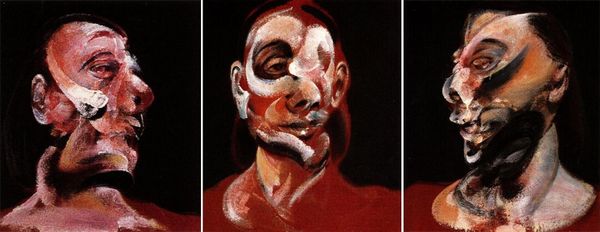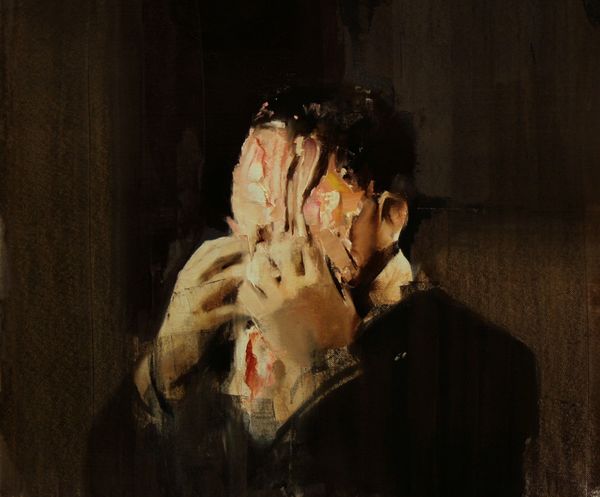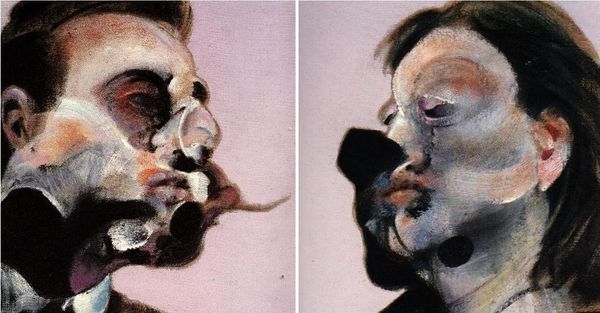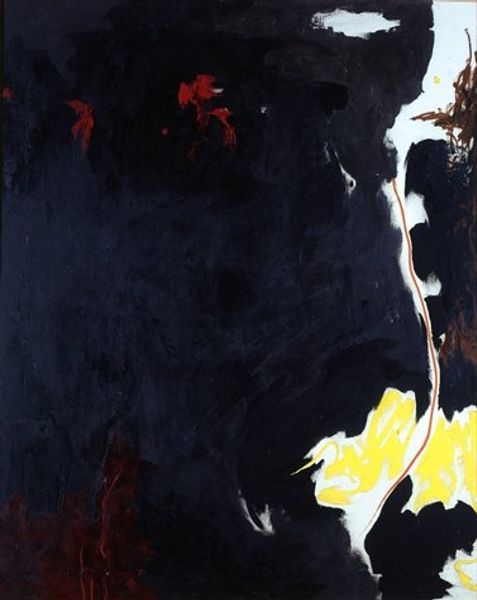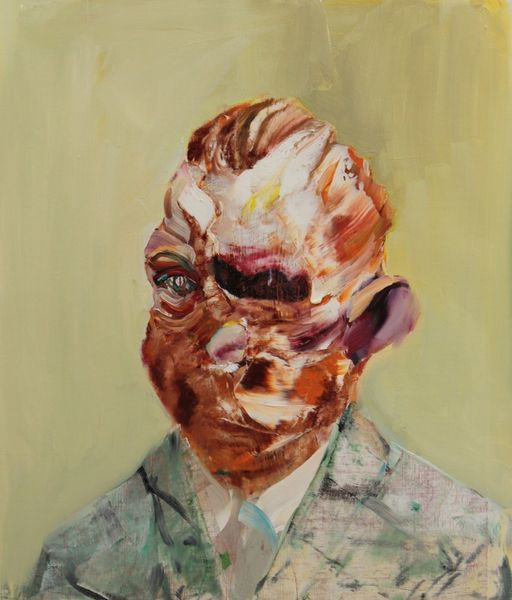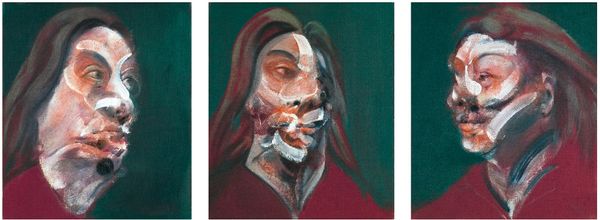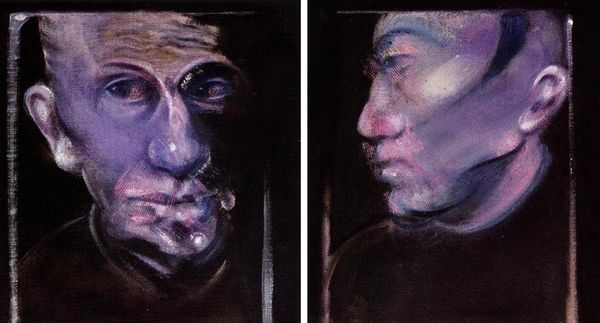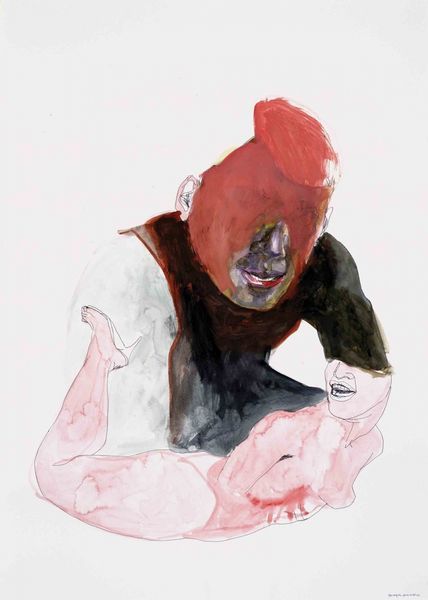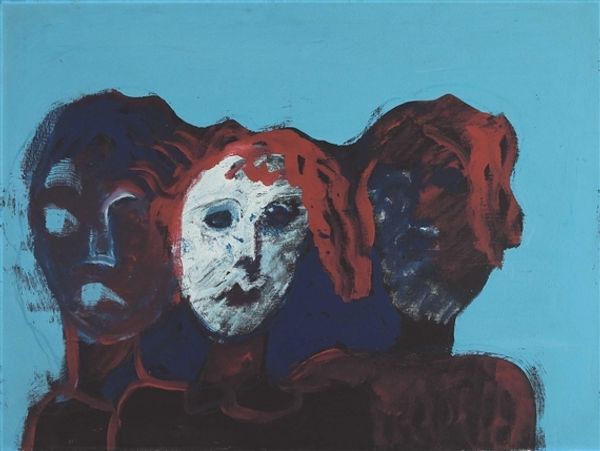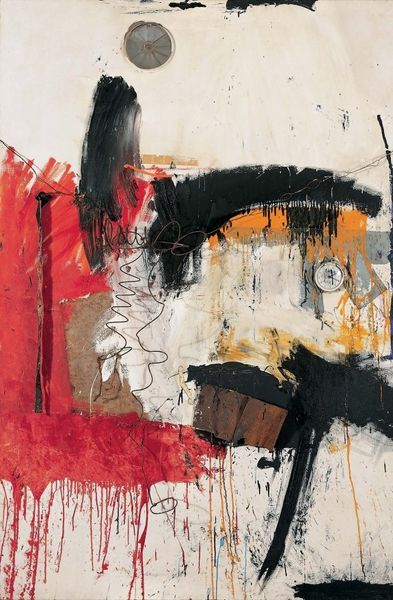
Copyright: Francis Bacon,Fair Use
Editor: We’re looking at Francis Bacon’s "Three Studies for a Portrait of Lucian Freud" from 1965, rendered in oil paint. The unsettling distortions create a deeply visceral feeling. How do you interpret this work within its historical context? Curator: Bacon’s work consistently grapples with the anxieties of the 20th century. Considering the socio-political backdrop of the 1960s, think about the Cold War and the pervasive fear of annihilation. Bacon, like many artists of his time, was wrestling with representing the human condition amidst such turmoil. Notice how the triptych format, traditionally used for religious paintings, is subverted here. Does that inform our understanding? Editor: It does. Using that format to portray psychological states seems intentionally provocative. It suggests a kind of secular reverence, but for something deeply fractured. Is he commenting on the institutional expectations surrounding portraiture? Curator: Precisely. Museums and galleries often presented portraits as markers of status and idealized representations. Bacon's deliberate distortion challenges that tradition, revealing a rawer, more honest depiction of human experience, stripping bare the social facade. It questions the very act of seeing and representing. Why do you think Freud repeatedly sat for Bacon despite these often-unflattering portrayals? Editor: Perhaps both artists were interested in pushing the boundaries of representation, even if it meant discomfort. Also, showing them displayed together within the museum framework really underlines that dialogue between artist and sitter, and how museums shape artistic legacies. Curator: Yes, this triptych and its display history is a reminder that art, even deeply personal works like this, become enmeshed with cultural and institutional power. Editor: That’s fascinating – I never thought about how the display itself is part of the art’s story! Curator: Reflecting on this painting teaches us to question the intended role of an artwork as the social function of portraiture comes into the art world spotlight.
Comments
No comments
Be the first to comment and join the conversation on the ultimate creative platform.
